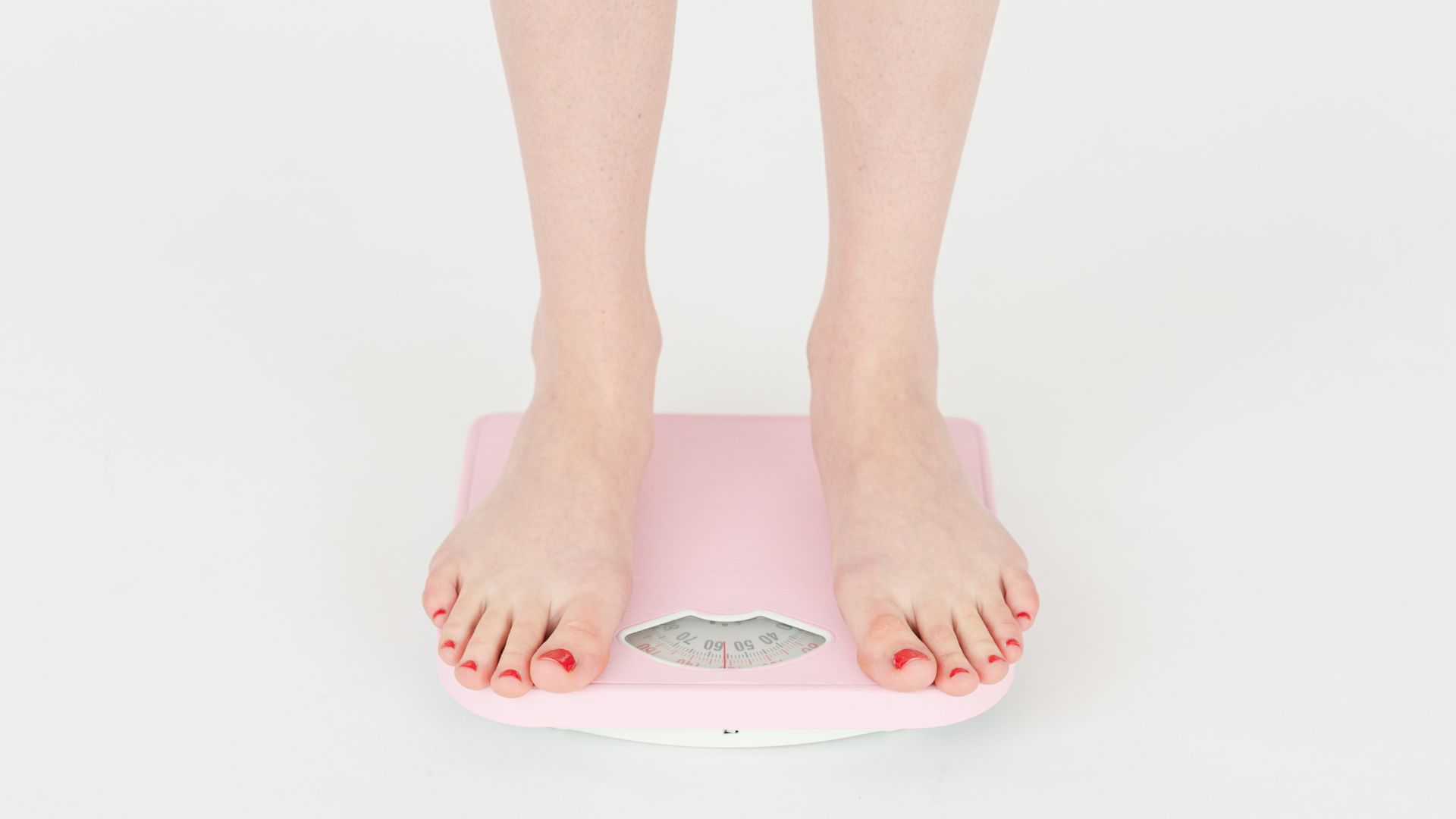Winter is not only a time for holidays, snowy walks, and long cozy evenings with hot drinks, but also a period when many of us face more serious psychological challenges. One such condition is Seasonal Affective Disorder (SAD), which occurs during the colder months when daylight becomes shorter and we lack sunlight. For some, this season is not filled with joy, but instead with depression, apathy, and chronic fatigue.
SAD is a form of depression that specifically manifests during certain times of the year, usually in the winter months. Individuals with this disorder experience symptoms such as fatigue, low mood, sleep problems, and increased appetite, especially cravings for carbohydrates and sweets. These symptoms can significantly impact one’s quality of life, preventing people from enjoying the season.
One of the main causes of SAD is the lack of sunlight. During winter months, we receive much less light, which affects the production of hormones in our bodies. Less sunlight means less serotonin, the “happiness hormone” that influences our mood, and disruptions in melatonin levels, which can lead to sleep problems. As days become shorter and grayer, many people start to feel down and lifeless.
However, there is no need to despair. It is important to remember that SAD is a temporary condition that can be managed, and its symptoms reduced through various methods. In this article, we will explore how to recognize Seasonal Affective Disorder, the factors that contribute to its development, and effective strategies to cope with it, such as light therapy, mindfulness, and dietary changes.
2. What is Seasonal Affective Disorder (SAD)?
Seasonal Affective Disorder (SAD) is a type of depression that most often occurs in winter when sunlight significantly decreases. This condition is seasonal and typically fades with the arrival of spring and the increase in daylight. However, during this time of year, many people may feel that their physical and mental health deteriorates and experience symptoms associated with depression.
The cause of SAD is thought to be a disruption in the body’s biological rhythms, primarily due to changes in sunlight levels. During winter, days become shorter and the dark hours of the day increase, affecting the production of important hormones such as serotonin and melatonin. These hormones regulate mood, energy, and sleep quality. A lack of sunlight reduces serotonin levels, which can lead to depressive symptoms, while melatonin levels increase, making us feel drowsy and apathetic.
The main symptoms of Seasonal Affective Disorder (SAD) include:
- Persistent fatigue and lack of energy. People with SAD often feel exhausted, even if they get enough sleep. Even routine tasks can seem insurmountable, and energy for them is lacking.
- Anxiety, depression, and low mood. These are the most prominent symptoms and may persist throughout the winter period. People with SAD can feel hopeless, lose interest in everyday activities, and decrease their social engagement.
- Difficulty concentrating. Due to depression and fatigue, people find it hard to focus on work, studies, or even daily tasks, which further exacerbates their condition.
- Sleep disturbances. This can manifest as insomnia, where an individual has trouble falling asleep, or excessive sleepiness, where a person sleeps too much. Both of these issues can worsen symptoms of depression and anxiety.
- Appetite issues, especially cravings for carbohydrates and sweets. People with SAD often experience intense cravings for carbs, particularly sweets, which can lead to weight gain and a general decline in health.
SAD is commonly diagnosed in people living in cold climates, especially in northern latitudes, where winter days are significantly shorter. In such regions, daylight can last only a few hours, which considerably increases the risk of developing SAD.
However, SAD can also occur in other places where winter is characterized by prolonged cloudy days or heavy snowstorms, causing people to spend more time indoors.
3. Causes of SAD
Seasonal Affective Disorder (SAD) is linked to several primary factors that affect our bodies during the winter period when sunlight is significantly reduced. The main cause of SAD is a lack of sunlight. When days become shorter and we receive less light, our biological processes that regulate mood and energy levels begin to get out of sync.
Lack of sunlight and its effect on hormones
Sunlight has a significant impact on the production of hormones that regulate our emotional state. One such hormone is serotonin, often referred to as the “happiness hormone.” It influences our mood, emotional well-being, and ability to feel joy and satisfaction in life. During the dark winter months, serotonin levels in the body may drop, which can lead to symptoms of depression such as apathy, sadness, and loss of interest in life.
Another important hormone is melatonin, which regulates our sleep-wake cycle. Melatonin is produced during the dark hours and helps the body prepare for sleep. However, due to shorter days and lack of sunlight, melatonin levels can increase, leading to excessive sleepiness and disrupted sleep patterns. As a result, many people with SAD suffer from insomnia or, conversely, experience a strong need for prolonged sleep, which worsens their depressive symptoms.
Circadian rhythm disruption
Our circadian rhythms are biological clocks that regulate various physiological processes, including sleep, wakefulness, body temperature, and hormone levels. These rhythms are influenced by light and darkness, and when the daylight hours shorten, our circadian rhythms may become misaligned. This misalignment can lead to feelings of fatigue, low energy, and poor mood.
The seasonal reduction in daylight and lack of sunlight disrupts this natural balance, leading to the feelings of tiredness and depression that are characteristic of SAD.
Genetic factors
In addition to external factors such as lack of sunlight, there are genetic factors that can increase the likelihood of developing SAD. If there is a history of depression or mood disorders in your family, you may be at higher risk for SAD. Research shows that individuals with a hereditary predisposition to depression or mood disorders are more sensitive to seasonal fluctuations.
Genetic predisposition may affect the brain’s sensitivity to changes in hormone levels or disruptions in circadian rhythms, which can contribute to the development of SAD during the winter months.
Psycho-emotional factors
Besides biological and genetic factors, psycho-emotional aspects also play a significant role in the onset of SAD. People who are under high levels of stress or suffer from chronic anxiety are more vulnerable to developing depressive symptoms during the winter. This is because stress and anxiety can weaken mental health and make us more sensitive to environmental changes.
Additionally, factors such as social isolation or a lack of physical activity during winter can worsen the symptoms of SAD. People who spend a lot of time alone or have limited social interactions, especially in the winter months, may become more prone to depression.
4. Symptoms of Seasonal Affective Disorder
Seasonal Affective Disorder (SAD) manifests through a set of distinctive symptoms that can severely impact a person’s quality of life during the winter months. These symptoms are primarily related to feelings of fatigue, mood decline, and difficulties with daily activities.
Main Symptoms of SAD:
- Constant Fatigue, Even After Sleep
One of the most common symptoms of SAD is persistent fatigue that does not improve after a night’s rest. People with SAD may wake up feeling as though they haven’t rested, or feel as though their body is not properly recovering. This is related to disruptions in circadian rhythms and changes in hormone levels, such as serotonin and melatonin, which influence energy levels and alertness. - Low Motivation and Desire to Isolate
People with SAD often lose interest in their usual activities and hobbies. This can manifest as a loss of motivation to work, pursue hobbies, or even interact with family and friends. A tendency to isolate and withdraw is another clear sign of the depressive state that characterizes SAD. - Mood Swings and a Sense of Hopelessness
An unstable mood is a key feature of SAD. Individuals with this disorder may feel happy and energized on rare sunny days, but most of the time, they experience periodic sadness, anxiety, and hopelessness. This feeling of losing control over one’s life or being unable to cope with daily tasks can further worsen their condition. - Difficulty with Concentration and Daily Tasks
Another symptom is difficulty concentrating and handling everyday tasks. People with SAD may notice that they struggle to focus on work, study, or even household chores. This occurs because depression and fatigue impair normal cognitive activity, reducing the ability to make decisions and act effectively.
How to Differentiate SAD from Ordinary Winter Blues?
It can sometimes be difficult to distinguish SAD from the common winter slump or stress that many experience during the colder months. However, there is a key difference: SAD is a seasonal disorder, meaning its symptoms emerge specifically during the winter months, when the days are shorter and there is less sunlight. These symptoms gradually dissipate with the arrival of spring, when sunlight increases, and the body restores its normal rhythm.
If depression or a low mood persists year-round, regardless of the season, it could indicate another mental health condition, such as chronic depression or an anxiety disorder, which are not linked to seasonal changes. In such cases, it is important to seek professional advice for a more accurate diagnosis and necessary assistance.
5. Strategies to Combat Winter “Blues”
Seasonal Affective Disorder (SAD) often impacts our mood during the winter months, but several effective strategies can help improve emotional well-being and alleviate the symptoms of this disorder. Let’s consider the main methods to combat winter “blues.”
Light Therapy
Light therapy is one of the most popular and effective treatments for SAD. This method involves using special lamps that simulate sunlight. These lamps create light similar to natural sunlight, which helps the body produce serotonin, improving mood and reducing symptoms of depression. Light therapy also helps normalize circadian rhythms, which can be disrupted due to short winter days and lack of sunlight.
Typically, light therapy uses a lamp with a brightness of about 10,000 lux, with sessions lasting 20 to 30 minutes per day. It is recommended to carry out therapy in the morning to synchronize biological clocks with daylight. Light therapy can be particularly useful for people living in regions with long winters and short days.
Mindfulness
Mindfulness is a practice that includes meditation, breathing exercises, and paying attention to the present moment without judgment. It is a powerful tool that helps manage depression and anxiety, often associated with SAD.
Studies show that meditation and mindfulness practices can significantly reduce stress levels, improve mood, and increase resilience to negative emotions. Mindfulness allows people to manage their thoughts and emotions more effectively, which is particularly important in winter months when depression and anxiety may be more pronounced. Even spending just a few minutes a day on breathing exercises or meditation can help relieve tension and improve overall well-being.
Dietary Adjustments
Proper nutrition plays an important role in maintaining mental health, especially during winter months when the body may experience a shortage of essential nutrients. One of the key components in combating SAD is vitamin D. This vitamin helps regulate serotonin levels in the brain, directly influencing our mood. Recent studies show that a deficiency in vitamin D can exacerbate depressive symptoms, so it is important to monitor its levels and, if necessary, take supplements or increase consumption of foods rich in this vitamin, such as fish, eggs, dairy products, and mushrooms.
In addition, it’s beneficial to include antioxidants and healthy fats, such as omega-3s, in your diet. Antioxidants help combat inflammation and oxidative stress, which can worsen the condition of someone with depression, while omega-3 fatty acids support brain function and improve mood. Foods rich in omega-3s include fish (especially fatty varieties like salmon), nuts, flaxseeds, and chia seeds.
Physical Activity
Physical activity is an important component in combating Seasonal Affective Disorder (SAD). Even short walks outdoors can significantly improve mood, increase energy levels, and help the body cope with depressive symptoms. Exercise promotes the production of endorphins—the “happiness hormones”—which aid in enhancing mood and reducing stress.
If outdoor walking opportunities are limited due to weather conditions, indoor physical activities such as yoga, stretching, or cardiovascular exercises can be beneficial. Regular physical activity not only contributes to better mental health but also helps maintain physical fitness, which has long-term positive effects on overall health.
Psychological Approaches
In addition to physical methods like light therapy and physical activity, psychological approaches play a crucial role in restoring emotional well-being for those suffering from Seasonal Affective Disorder (SAD). These approaches help manage depression by changing negative thoughts and behaviors, while also supporting emotional well-being through social support.
Cognitive Behavioral Therapy (CBT)
Cognitive Behavioral Therapy (CBT) is one of the most effective treatments for depression, including Seasonal Affective Disorder. CBT focuses on altering negative thoughts and beliefs that can exacerbate depressive states. Through CBT, patients learn to identify and replace distorted, negative thoughts about themselves and the world, which leads to improvements in mood and behavior.
For example, a person might begin to see the dark winter months as a time for rest and personal growth, rather than viewing them as a period where everything goes wrong. CBT helps individuals develop positive thinking and problem-solving skills, which are key aspects of managing depression.
A therapist guides the client in understanding which specific thoughts and emotions contribute to their low mood and how they can be replaced with more constructive and realistic ones. This not only helps individuals cope with the current symptoms of SAD but also fosters resilience against stress and difficult times in the future.
Social Support
Social support plays a key role in combating SAD. When a person feels isolated and lonely, their depression can deepen, worsening their condition. It is important to maintain connections with loved ones, friends, and colleagues, as communication and support help reduce stress levels, lift mood, and build self-confidence.
Interacting with people who show care and understanding can significantly alleviate emotional burdens. Even simple conversations with close friends or family members can help someone feel less isolated and manage challenges more effectively. This also reduces anxiety and depression levels by stimulating the production of hormones like oxytocin, which promote feelings of happiness and security.
It is also important to actively seek social interactions and engage in group activities such as interest clubs, volunteering, or sports. This not only helps build social connections but also reduces the sense of isolation often associated with SAD.
When to Seek Help
If the symptoms of SAD become more pronounced and start interfering with daily life, it is important to consult a specialist. Some people may attempt to manage depression on their own using various methods, but when depression becomes chronic or overwhelming, professional help is necessary.
When Should You See a Psychologist or Psychotherapist?
If you notice that the symptoms of SAD are significantly impacting your work, studies, relationships, or ability to perform everyday tasks, it is a sign that professional help is needed. You should also seek help if you experience:
- Persistent feelings of hopelessness and helplessness despite efforts to improve your condition.
- Difficulty with even basic tasks such as work, self-care, or decision-making.
- Thoughts of suicide or self-harm.
- Constant fatigue and sleepiness that interfere with daily activities.
What Can a Specialist Offer?
A psychologist or psychotherapist may suggest various treatment options depending on the severity of the condition. One approach is continuing with Cognitive Behavioral Therapy (CBT), which helps alter persistent negative thinking and behavior patterns. Other therapeutic methods, such as interpersonal therapy aimed at improving relationships and interactions with others, may also be used.
In more severe cases, when depression becomes debilitating, the specialist may recommend medication, including antidepressants or mood-boosting and sleep-enhancing drugs. This can help normalize the chemical balance in the brain, speeding up recovery.
It’s important to remember that seeking help is not a sign of weakness. It’s a vital step toward recovering your health and improving your quality of life. The earlier you seek treatment, the sooner you can return to normal life and cope with the symptoms of SAD.
Seasonal Affective Disorder is a real condition that affects the mental health of many people during the winter months. However, through light therapy, mindfulness practices, proper nutrition, and physical activity, it is possible to significantly improve mood and overcome depression. Taking care of your mental health during the winter months is crucial, and it’s important not to delay seeking help if symptoms worsen.








